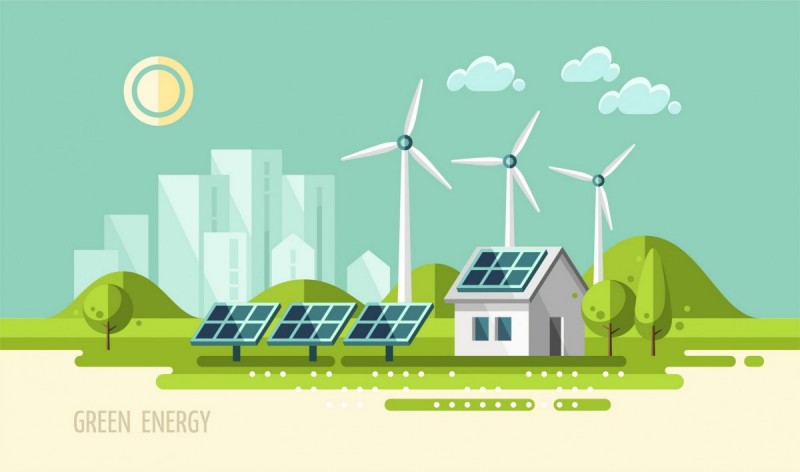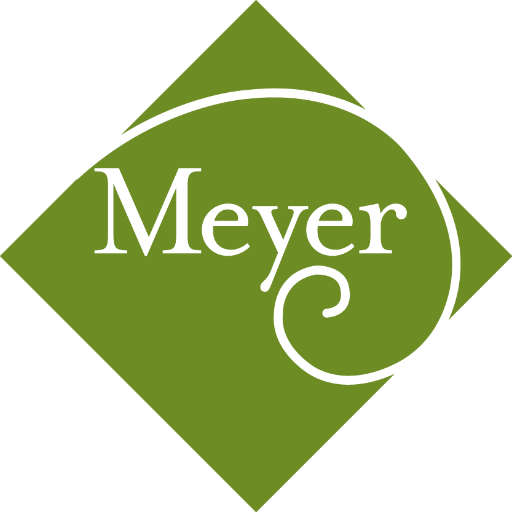DC passed the most ambitious clean energy law in the US. Now what?

Green energy stock photo from Faber14/Shutterstock.
In January 2019, the District passed the most ambitious clean energy legislation in the nation. However, local climate activists say the hard work is just beginning—they want to know who will lead the DC Green Bank and whether the law will benefit the least-privileged residents of the District.
March 22 marked the official beginning of Law L22-0257, also known as the Clean Energy Act DC. First introduced as the Clean Energy DC Omnibus Act of 2018 by Councilmember Mary Cheh (ward 3), the bill aimed to transition DC to run on 100% renewable electricity by 2032, making it the country’s most ambitious renewable electricity standard. The law also aims to reduce carbon emissions by 50% by 2032.
Now, almost four months after DC Mayor Muriel Bowser signed the bill into law, activists and experts say it's important to pay attention to how the law is implemented and funded. They say scrutiny is needed regarding equity and accountability, particularly with the DC Green Bank, which is the financial engine for the clean energy law. The Green Bank would manage loans to private developers looking to make their buildings more efficient, as well as loans to individual households looking to do the same. These “financial products” are just some of the services it could offer.
Bowser has announced four of the seven voting candidates for the Green Bank's authority board, and the rest are expected to be announced within the next few weeks. Committee hearings are currently being planned for late May, with confirmation in early June. Who gets on the board is important because board members will determine the direction of the program and make key decisions. Since equity is a big part of the Clean Energy Act, making sure board members instill equity and fairness is a top priority for many local activists.
The different parts of DC's green law work in concert
The Clean Energy Act DC is meant to be self-containing, Mark Rodeffer of the DC Sierra Club chapter says. This means that money for the various programs will come from the Sustainable Energy Utility and the DC Green Bank.
Here are the main parts of the Clean Energy Act DC, and how they fit together:
1. The Sustainable Energy Trust Fund (SETF): Under the new law, residents will be charged a fee for electricity and natural gas consumption. This fee, called the Sustainable Energy Utility (SEU), will go into the Sustainable Energy Trust Fund to pay for energy efficiency programs.
Thirty percent of the revenue earned through the SEU will be used to assist low-income residents with efficiency programs and projects like bill assistance, weatherization, and switching fuel. The fund will put aside $3 million each year to fund energy efficiency improvements in low-income housing buildings.
By 2025, $70 million will be added to the DC Green Bank to fund clean energy projects in the city and foster new development.
2. The Building Energy Performance Standard (BEPS): The DC Department of Energy and the Environment will asses private buildings to ensure energy efficiency every five years beginning in 2021.
By 2021, all DC-owned buildings of at least 10,000 square feet and private buildings of at least 50,000 square feet will need to be compliant with the standard or face a penalty and a timeline of five years to become compliant before receiving another penalty. The square footage threshold for privately-owned buildings decreases to 25,000 in 2023 and 10,000 in 2026. The BEPS and the SEU will be utilized by the Green Bank to incentivize and assist with affordable housing efficiency programs.
3. Transportation emissions: The law aims to electrify all public transportation vehicles, and it also establishes a fee for fuel as part of an initiative to reduce greenhouse gas emissions. By 2045, all privately-owned commercial transportation will be required to be 100% zero emissions.
DC Circulator electric bus at a charging station by BeyondDC licensed under Creative Commons.
An excise tax on private, non-commercial vehicles aims to incentivize people to purchase fuel-efficient vehicles. Though no funding has been set aside to buy more electric buses, the law’s budget apportions $250,000 for research into the implementation of greener transportation. The mayor’s budget proposal for Fiscal Year 2020 only specifies $3 million to install electric vehicle charging stations.
4. The Green Bank: The DC Green Bank is a key component of the law, and activists and environmentalists are keeping a close eye on how it's implemented. Green Banks are designed to be funded partially through private and public funds. By using public funds to leverage private investment through loans and financing, not grants, the District would be able to eliminate the upfront costs for energy efficiency projects, such as solar panels.
This video from Montgomery County explains how Green Banks work.
The Green Bank is also designed to bring private investment into the city—though some activists are concerned the kind of investment it brings in could further drive inequality. So far, the Green Bank doesn't have any requirements for ensuring that development projects include affordable housing, but the authority board is supposed to have two voting members with affordable housing experience.
The DC Green Bank is modeled after the Connecticut Green Bank, which is funded by public and private investment and is answerable to the DC Council and the mayor. (Another example of a quasi-public financial institution in DC is the DC Housing Finance Agency.) There is some flexibility to the type of financing the Green Bank can do, unlike traditional banks, which is how they are designed to sustain themselves. Green Banks can utilize various strategies to get private lenders to finance high-risk projects. Montgomery County also has a green bank.
This visualization tool shows the locations and details for the CT Green Bank's projects, including residential solar panels, loans, and commercial, industrial and infrastructure financing projects. Image by Connecticut Green Bank.
Beside financing city, commerical, or individual efficiency projects, the Green Bank also encourages more demand for clean energy projects, which then enhances its ability to provide more financing to more and wider reaching projects. Again, using the example of solar panels, developers and investors are incentivized to build energy efficient buildings because energy efficiency products like solar panels bring guaranteed returns on investment. DC residents also benefit through the creation of new green jobs, such as installing and repairing solar panels.
However, the Connecticut Green Bank, which started in 2011, has run into issues over the past few years. In 2017, the Connecticut state legislature used $155 million from energy-efficiency program funds to balance a two-year budget deficit, of which $35 million was set aside specifically for use by the Green Bank. The raid totaled $32.6 million and caused the financing body to cut staff and find new ways to make revenue to fund its programs. This slowed the state’s goal to cut carbon emissions by 80%.
I reached out to DOEE multiple times to see if the Connecticut Green Bank raid could be cause for concern for DC's Green Bank, but they did not respond to my request for comment on this issue.
Activists want to know: Who will lead the Green Bank?
Who will be running the Green Bank is very important. Activists say an authority board that reflects the need for equity and residents' and businesses' varied interests is a priority if the Clean Energy Act is to be a successful, long-term project. Organizers at 350 DC, which advocates around equity and climate change and which was one of the early architects of the Clean Energy Act, emphasizes the importance of equity in the Green Bank.
According to Johanna Bozuwa, an organizer with 350 DC, organizing efforts led to a requirement that two of the seven voting board members have a background in community development or affordable housing. The group also succeeded in allowing public input on the bank’s lending practices once a year. 350 DC has provided a list of nominations it thinks reflect community interests and equity.
“As the Green Bank is being set up we are staying vigilant, vetting and reacting to the nominations for the board as they are announced,” Bozuwa said. “We will continue to be an outspoken voice on the Green Bank—pushing it to design its lending for the many, not the few.”
Board members, according to the act’s early architects, should have backgrounds that equip them to make sure the Green Bank is equitable. Since the Green Bank is a financing body, loan rates and financing for low-income residents should not be prohibitive. Some activists are worried that the bank will prioritize developers whose projects cater to high income people, given the DC government’s track record of being friendly to high-end development.
“The last thing we want is for this to be something that exacerbates inequality. This means holding councilmembers responsible and making sure prices don’t skyrocket,” says Denise Robbins, Communications Director at the DC Climate Coalition.
What's happening next with the Green Bank and clean energy law?
There are 11 people needed to be part of the authority board in total: seven of them voting, and four non-voting. In January, Bowser nominated four voting candidates, including Brandi Colander with Charter Communications, Ed Hubbard of the Renewable Fuels Association, Hannah Hawkins with the US Department of Treasury, and Lori Chatman with Enterprise Community Loan Fund.
The remaining authority board members are expected to be announced within the next two weeks, according to Mike Matthews, Public Affairs Specialist at the DOEE. Committee hearings are being planned for late May, with board confirmation in early June.
The private sector voting members will join four non-voting DC government officials: Deputy Mayor for Planning and Economic Development Brian Kenner, Director of the Department of Energy & Environment Tommy Wells, Director of the Office of Public Private Partnerships Jonathan Kayne, and DC’s Chief Financial Officer Jeffrey Dewitt, according to the DOEE.
The DC Council must then interview the nominees before the board members are confirmed, after which an executive director must be chosen. “The [authority board] will finalize job descriptions and determine the process and timeline for hiring an Executive Director and other staff within the first few months after confirmation,” Matthews says.
DOEE staff are currently working with finance expert Matthew Brown of Harcourt, Brown, and Carey to develop finance products for the authority board to consider. According to Matthews, it expects, “that products will be developed to serve District residents and businesses including home owners, small businesses and commercial developers, as well as community solar. Specific product offerings and financial solutions will be announced in early 2020.”
The future of DC's Clean Energy Act rests on the success of all its moving parts. Activists hope that the DC Council, the DOEE, and the mayor’s office will continue to hold equity as its highest standard during the implementation. Transparency—especially during the early stages when foundational decisions are being made—is vital so that activists and community members can stay informed about the projects and initiatives that could impact them.
Correction: This article originally referred to Mike Matthews as Mark Matthews.


This article is part of the GGWash Urbanist Journalism Fellowship, made possible in part by the Island Press Urban Resilience Project and the Meyer Foundation.

